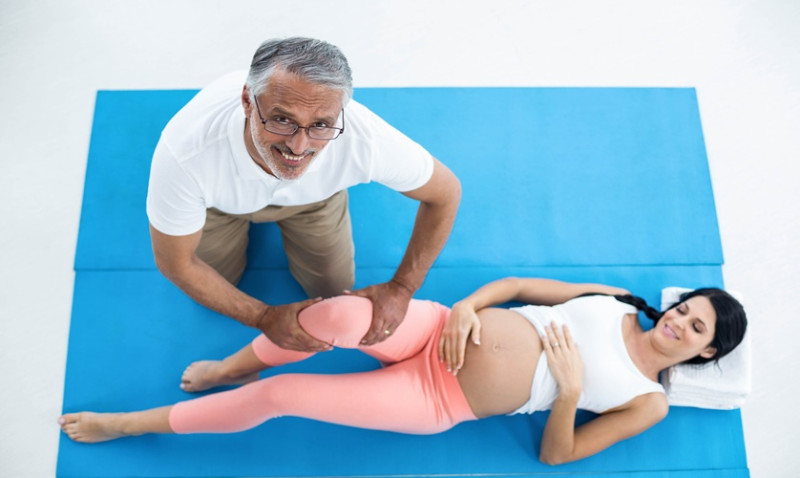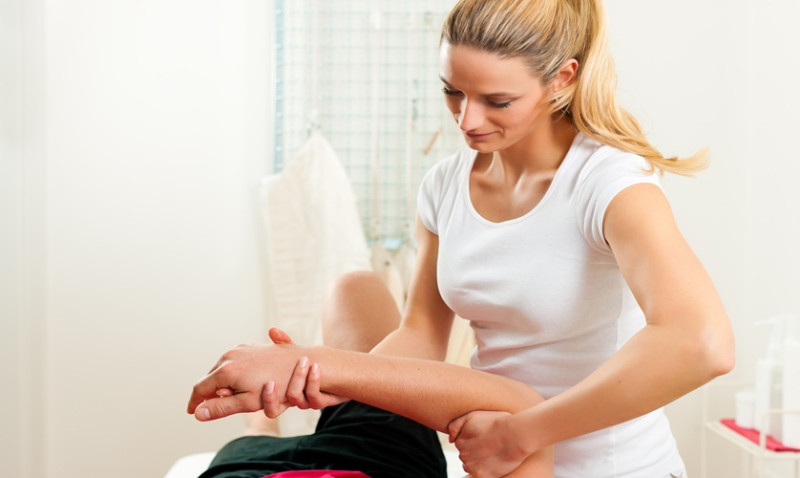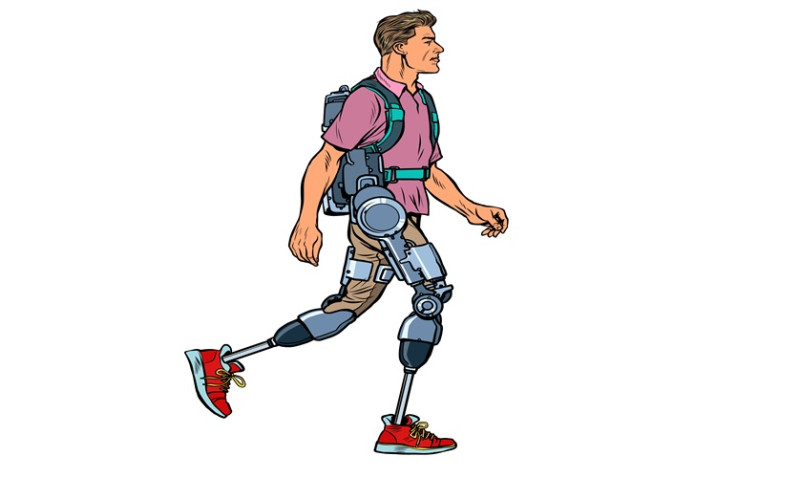
Passive Knee Mobilisation using Mobilisation With Movement (MWM) is a specialised physiotherapy technique aimed at restoring joint function and alleviating pain in the knee. Developed by renowned physiotherapist Brian Mulligan, MWM combines passive joint mobilisations with active patient movements, creating a pain-free and effective approach to improving mobility and strength.
In simpler terms, passive mobilisation refers to the physiotherapist applying targeted, gentle forces to a joint while the patient performs specific movements – such as bending or straightening the knee. This synergistic action promotes better alignment and normal function of the joint, often offering immediate improvement in symptoms.
For DIY enthusiasts, young professionals, architects, and tradespeople across the UK who spend long hours on their feet or engage in physical tasks, knee problems can quickly interrupt their routine. Understanding and possibly utilising passive mobilisation techniques under professional guidance can be the key to getting back on track faster and more effectively.
This technique is particularly beneficial when there's a restriction or discomfort during normal knee movements like walking, squatting, climbing stairs, or during sports activities. Whether due to overuse, strain, injury, or post-operative stiffness, MWM can make a significant difference in recovery.
Physiotherapists trained in MWM typically assess each patient individually to determine whether this technique is suitable. If pain-free movement can be achieved through mobilisation, the method is often used during sessions and prescribed as part of a tailored home exercise programme.
How Does MWM Work in Practice?
During a session involving MWM for the knee, the physiotherapist first identifies the movement that causes discomfort or restriction. This could be flexion (bending), extension (straightening), or more complex actions like squatting or lunging. A gentle passive force or glide is then applied by the therapist in a specific direction while the patient performs the troublesome movement.
The passive force often addresses subtle positional faults of the tibiofemoral joint (where the thigh bone meets the shin bone), restoring proper alignment in real-time. The goal is to achieve a "symptom-free" response—meaning the painful or limited movement becomes both comfortable and improved.
For instance, if bending the knee causes sharp pain or becomes stiff halfway through the motion, a therapist might apply a medial glide on the tibia while the patient flexes the knee. When the gliding pressure reduces pain and increases movement range, the technique is repeated across multiple repetitions.
As a long-standing manual therapy approach within musculoskeletal physiotherapy, MWM is considered safe, non-invasive, and effective. Most importantly, it promotes patient participation, as the patient must actively move the knee during treatment. This helps in generating muscle memory and greater retention of the mobility gains.
Common Knee Conditions Treated with MWM
Passive Knee Mobilisation with MWM has been demonstrated to help with a wide variety of knee issues commonly encountered in active professionals and trade workers. Below are some of the most frequent conditions where it's applied successfully:
- Patellofemoral pain syndrome (PFPS): Frequently occurring in young adults and athletes, especially those involved in repetitive motions like kneeling, squatting, or jumping.
- Knee osteoarthritis: MWM can help relieve stiffness and improve functional activities such as walking and climbing stairs.
- Post-surgical rehabilitation: Useful in situations like knee replacements or ACL repairs where improving knee flexion and extension is critical.
- Sports-related injuries: Sprains, strains, and overuse injuries resulting in restricted motion or discomfort may benefit from MWM.
- Postural or biomechanical misalignments: Often seen in professions involving heavy lifting, prolonged standing or awkward positions (e.g., tilers, plumbers, carpenters).
While MWM is not a panacea, its pain-free nature and immediate results make it one of the go-to interventions in modern hands-on physiotherapy. It also has a high degree of patient satisfaction and compliance, which is essential for long-term results.
Benefits of Using MWM for Knee Rehabilitation
One of the main reasons MWM stands out among knee therapy techniques is its ability to produce quick and tangible results. Many patients experience improved mobility and reduced pain even within the first session. Below are key benefits of passive mobilisation with MWM:
- Immediate pain relief: Unlike traditional exercises that may take time to show results, MWM often delivers instant reduction in discomfort.
- Restores full range of motion: By correcting joint alignment, mobility returns with fewer compensations or muscle overuse.
- Personalised technique: Tailored to the individual’s movement patterns, injury history, and symptomatic presentation.
- Non-invasive and drug-free: A hands-on alternative to medication or surgical interventions for many cases of knee dysfunction.
- Empowers patient self-mobilisation: Patients can often continue movements at home with tools like resistance bands, making rehabilitation more efficient and cost-effective.
When dealing with recurring knee stiffness or discomfort, especially after tasks like painting, renovating, garden landscaping, or trade work, MWM sessions may prove invaluable. It can significantly reduce recovery time and improve knee function without taking extended breaks from work or activity.
When Should You Consider MWM?
There is often confusion about when to see a physiotherapist or consider a technique like MWM. Generally, if you’ve had knee discomfort lasting more than a week, or recurrent stiffness that limits movement, it’s worth seeking a professional opinion.
For individuals in the UK working in physically demanding roles—such as builders, architects conducting site visits, or homeowners engaged in major DIY projects—knees take on a huge load daily. Repetitive movements can cause minor misalignments that gradually lead to chronic pain if untreated. MWM is uniquely positioned to address these micro-level issues.
Additionally, those recovering from knee surgeries or dealing with chronic joint conditions will find MWM beneficial early in their rehabilitation to prevent long-term mobility limitations. It forms part of a broader programme including strength training, stretching, and biomechanics correction.
What to Expect During a Passive Knee Mobilisation Session
During your initial assessment, a trained physiotherapist will evaluate your knee’s range of motion, alignment, and pain levels during movement. They will then attempt to reproduce movements that trigger the problem. If improvement is noted with a specific glide, MWM becomes part of your therapy plan.
A session typically includes warm-up mobility exercises, several repetitions of passive techniques with you moving your knee, and follow-up active stretches or strength drills. It may also include taping or bracing to maintain joint alignment in the short term.
Sessions usually last 30–45 minutes, and pain relief or motion gains are noticed immediately in many cases. You’ll likely be given simple home exercises to reinforce the mobilisation effects between appointments.
Self-Mobilisation Techniques You Can Try Under Guidance
If you’re not in acute pain and have been assessed to be safe to perform them, certain self-mobilising movements can be performed at home. These help maintain the progress gained from in-clinic sessions and are particularly useful for busy homeowners, designers on deadlines, or tradespeople on the go. These include:
- Using a resistance band anchored around your ankle to simulate a glide during knee bends
- Wall squats combined with lateral knee taping for patella realignment
- Step-down exercises with light resistance to promote knee control
Do note that self-mobilisation should be done only after professional evaluation. Incorrect technique or failure to identify the right direction of force can aggravate symptoms. It’s best to work alongside a registered physiotherapist who can create a customised plan based on your daily movements and knee function.
Final Thoughts
Passive Knee Mobilisation with MWM is a powerful and proven therapy that can dramatically improve mobility, reduce pain, and restore function. Whether you’re a DIY enthusiast gearing up for your next home makeover, an architect overseeing demanding site projects, or a professional tradesperson working with physical loads, your knees are vital to performance and lifestyle.
Understanding and exploring techniques like MWM can help you stay mobile, prevent further injury, and return to what you enjoy doing faster. Consider reaching out to a certified physiotherapist specialising in MWM to discuss whether this technique could support your knee health journey.
Keep moving smartly, and don't let knee pain force you to hit pause!





